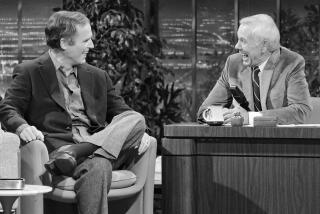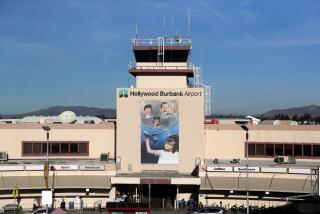Burbank Station to Do Double Duty
- Share via
In Pasadena, they liked the way jailers could see directly into each cell from their central office. In Monrovia, they discovered a modern diesel exhaust system in the fire station’s garage. And in Glendale and Culver City, they were inspired by the fire departments’ vehicle maintenance areas.
When the $30-million Burbank Police and Fire Station opens in January, it will be a collection of the best elements from dozens of departments throughout the state.
“We both needed a new facility and the property was too big for just one department, so it just made sense to build combined police and fire stations,” said Lt. Joseph Latta, police project manager.
Latta was part of a four-member crew that traveled the state for 18 months in search of the perfect police and fire department. Then, taking into account the successes and failures of those stations, the team, along with architect Larry Wolff, designed a cutting-edge, 120,000-square-foot dual facility. One of a handful of combined police/fire department headquarters in California, the station should keep Burbank in step with the leaders in police and fire safety well into the next century.
“We’ve designed a variety of police and fire stations, but not one of this magnitude and not one that was a combined facility,” said Wolff of WLC Architects, the firm hired to draw the plans for the new station.
The dual station is bordered by Orange Grove Avenue, Palm Avenue, 3rd Street and Glenoaks Boulevard in Burbank’s downtown.
The design of the fire department, which will occupy one-third of the building, required less preparation than the police side, said Battalion Chief Tracy Pansini. The city had renovated and built fire stations in the past, so, Pansini said, the project team visited only about 10 other stations and relied on past research.
“The Police Department’s mission was a lot more difficult than ours,” Pansini said, because there had not been a police station built in the city for 40 years.
Latta justified the extensive preparation, saying spending the funds now would save the city money later.
“If the planning hadn’t been done, we would have a building that could not meet the needs of the future. We would constantly have to go back and fix things,” Latta said.
The city also bought more expensive, longer-lasting supplies, such as stainless steel desks for the report writing room, Latta said.
One problem that was not so easily solved, Wolff said, was the limited number of offices planned for the ground floor, which is the most accessible to the public. The constraints forced Wolff to move the patrol officers’ report writing room and several other offices into the basement.
Wolff said he created a “language of architecture” for the area by looking at the city’s other buildings. For example, Wolff said, the department’s hose tower is proportionately similar to the tower at city hall.
The project began in the late 1980s, when WLC Architects was hired to design plans for separate police and fire stations. Latta said the project team bounced around ideas for dual and separate stations for several years, finally deciding that the best choice was a dual station, where facilities such as offices and vehicle maintenance could be shared.
Residents rejected a proposed bond issue in 1991, so council turned to the city’s Redevelopment Agency, which is in charge of revitalizing central Burbank. The agency financed $25 million of the project, said director Robert Tague. The rest came from city revenues.
The current police facility, one block from the new structure, is anything but practical, Latta said. Offices are overcrowded and supplies, such as patrol bicycles, are stored in the hallway. The walls in the basement are streaked with drain water from the streets and once, Latta said, raw sewage flooded the computer room.
For the Fire Department, the new facility means more space to hold its prevention and safety programs, said Chief Mike Davis. The current station--one of six in the city--was outdated and could not accommodate the department’s growing number of public service programs, such as the hazardous materials unit.
So far, Latta said, people appear pleased with the building. The police will have upgraded supplies, such as lockers equipped with battery rechargers, and the fire department will have more space, which will improve its teaching programs and living arrangements.
The new department was scheduled to open in November but, Latta said, the city delayed the move to give the contractor, Kajima Construction Services of Los Angeles, more time.
“There was no reason to hurry,” Latta said. “Why not do everything right?”
More to Read
Sign up for Essential California
The most important California stories and recommendations in your inbox every morning.
You may occasionally receive promotional content from the Los Angeles Times.













